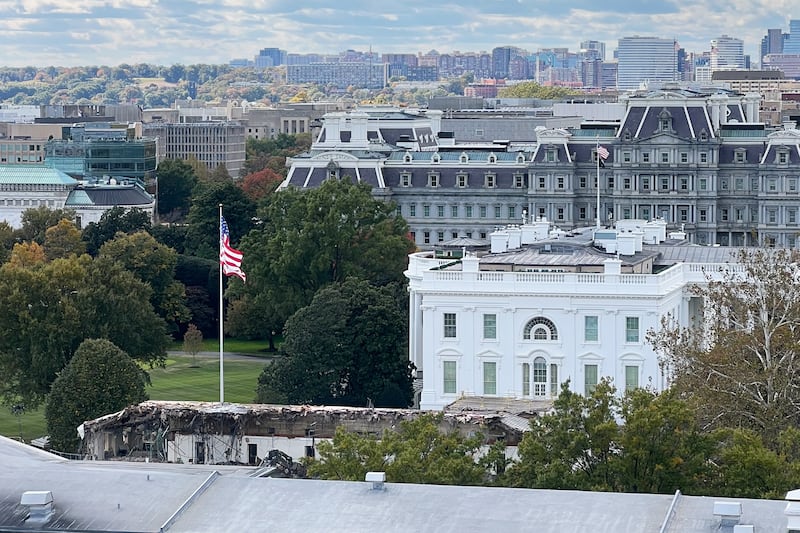The White House has been home to every U.S. president since 1800, when John Adams and his wife, Abigail, moved in — before construction on the building was even finished. Since then, the residence has evolved through centuries of expansion, renovation and, at times, controversy.
While much attention is often paid to the West Wing, home to the Oval Office, executive staff offices, the Cabinet Room and the James S. Brady Press Briefing Room, the East Wing has its own history.
Today, as new construction once again turns eyes toward this side of the White House, it’s worth looking back at how the East Wing came to be.
Origins of the East Wing
The East Wing’s story begins with President Thomas Jefferson, the third president of the United States, who in the early 1800s added a colonnaded terrace connecting the main residence to the east section. This architectural addition provided a covered walkway linking parts of the White House grounds, according to an archive of the White House’s website.
The East Wing as it is known today didn’t take shape until 1942 under President Franklin D. Roosevelt. Under the demands of World War II, Roosevelt ordered the construction of a new building along the east side for additional offices and wartime security.
According to History.com, the new East Wing concealed a bomb shelter designed to protect the president and staff from a potential enemy attack during World War II. The addition sparked controversy at the time, per the White House website. Some Republicans considered the project “wasteful,” and others accused Roosevelt of “using the project to bolster his presidency’s image.”
East Wing at work
Over time, the East Wing has evolved to become the social and ceremonial heart of the White House. The offices of the first lady and her staff were located here, along with the events team, in charge of planning White House events and receptions.
The East Wing also served as the main public entrance for visitors on official tours and amenities for presidential families, including a movie theater and the Jacqueline Kennedy Garden, which remains a highlight of the White House grounds.
The structure has seen many small transformations since Roosevelt’s day. In 2010, Trump called David Axelrod, a senior adviser to Barack Obama at the time, with an offer.
“‘You know, you have these state dinners and you have them in these little tents,’” Axelrod recalled Trump saying. “And he said, ‘You know, I build ballrooms. I build the greatest ballrooms and you can come down to Florida to see them.’”
Axelrod noted he handed Trump’s proposal off to a colleague, never closing the loop, according to NPR.
Today, the East Wing hosted the first lady and her staff as well as official guests, and was a key aspect of White House tours and visitor experience. However, during current construction, White House press secretary Karoline Leavitt noted the first lady’s offices have been temporarily relocated.

